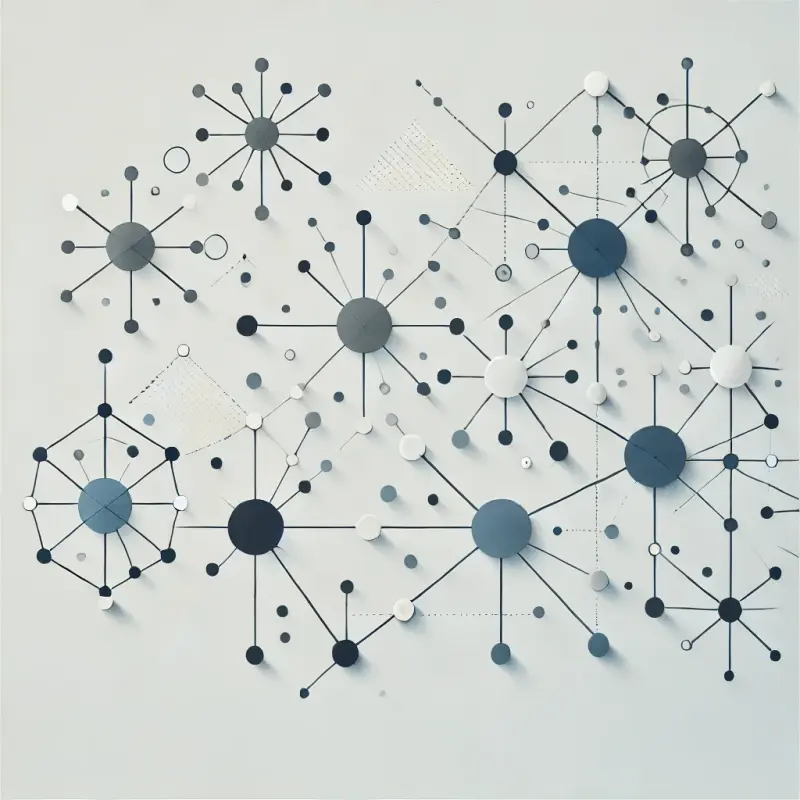Self-Learning Through Social Structure Analysis: How to Use Data to Understand Society
Introduction
Modern society is a complex system where individuals, groups, and organizations interact through networks of connections. Understanding this social structure is a crucial step in studying the mechanisms of interaction, group development, and the spread of ideas. Social Network Analysis (SNA) provides a unique tool to examine these structures. Mastering SNA through self-learning opens the door to independent exploration and interpretation of data, enabling a deeper understanding of how society is organized.

What is Social Network Analysis?
Social Network Analysis studies the connections between entities, which may represent people, organizations, countries, or even ideas. These entities are visualized as nodes, and their connections are visualized as edges. This approach allows researchers to answer questions such as:
- Who plays a key role in a group?
- How do information or resources flow within a network?
- Which subgroups are most closely connected?
At its core, SNA is based on graph theory, a mathematical discipline that studies networks of nodes and edges. Examples of its application can be found in various fields, from sociology and anthropology to marketing and information technology.
Self-Learning: An Independent Path to Data Mastery
Self-learning in the field of social network analysis offers a flexible approach to studying the material without being confined to formal curricula. This is especially important since SNA requires an interdisciplinary approach that includes the basics of mathematics, statistics, programming, and sociology.
Key aspects of self-learning include:
- Choosing learning resources. These can include books, articles, video lectures, or open educational platforms.
- Setting goals. For example, understanding the structure of a social group or studying user behavior in a network.
- Practical application of knowledge. Learning tools such as Gephi, NodeXL, or Python libraries (e.g., NetworkX).
Steps to Master Social Network Analysis
- Understanding Basic Concepts
Before diving into the analysis, it is essential to understand key terms:
- Nodes: Elements of a network (e.g., people).
- Edges: Connections between nodes.
- Centrality: A measure of a node's influence in a network.
- Learning Metrics and Methods
SNA offers various methods of analysis, including:
- Degree: How many connections each node has.
- Closeness: How quickly information can reach a node.
- Betweenness: How much a node connects different parts of the network.
- Practicing with Real Data
Start with simple datasets, such as analyzing friendships in a small group, and then move on to more complex tasks, such as examining large social networks or organizations.
Using Data to Understand Society
Data is the foundation for studying social structures. With SNA, it is possible to visualize and interpret the following aspects:
-
Group Structure
SNA helps identify communities where nodes are closely connected. This can be useful for studying family ties, workplace teams, or online groups. -
Information Flow
Networks show how information or ideas spread among participants. For example, one can analyze which nodes act as influence hubs. -
Identifying Key Participants
Centrality metrics help determine which nodes are most important for the network's functioning.
Benefits of Independent Study
Learning social network analysis independently provides the following advantages:
- A deeper dive into topics that personally interest you.
- The ability to work with real data without theoretical restrictions.
- Development of critical thinking and analytical skills.
Self-learning also fosters an interdisciplinary approach: you will work with concepts from various fields, which broadens your perspective.
Practical Application Examples
-
Studying Social Interactions in Small Communities
Example: Analyzing a school class or a student group to identify leaders and subgroup distribution. -
Analyzing Behavior on Social Media
SNA can be used to study user interactions on platforms, helping to understand how communities are formed and ideas spread. -
Exploring History and Culture
By analyzing historical documents, one can construct networks of interactions between notable figures or groups during a particular era.
Recommendations for Beginners
-
Learn the Available Tools
Tools such as Gephi or NetworkX are excellent for visualizing data and conducting analysis. -
Practice with Open Datasets
For example, datasets that capture relationships between characters in books or movies are a good starting point. -
Participate in Online Communities
Engaging with like-minded learners can help answer questions and share experiences.
Conclusion
Self-learning in social network analysis is a pathway to meaningful understanding of social structures and the processes occurring within society. By mastering this tool, you can interpret data, identify connections and interactions, and draw conclusions about the functions and dynamics of social systems.
Applying the acquired knowledge opens up numerous possibilities—from studying small groups to analyzing complex social networks. This makes SNA a universal tool for those seeking a deeper understanding of how society works.
Articles
En vous inscrivant à nos notifications, vous recevrez nos nouvelles publications directement par e-mail.